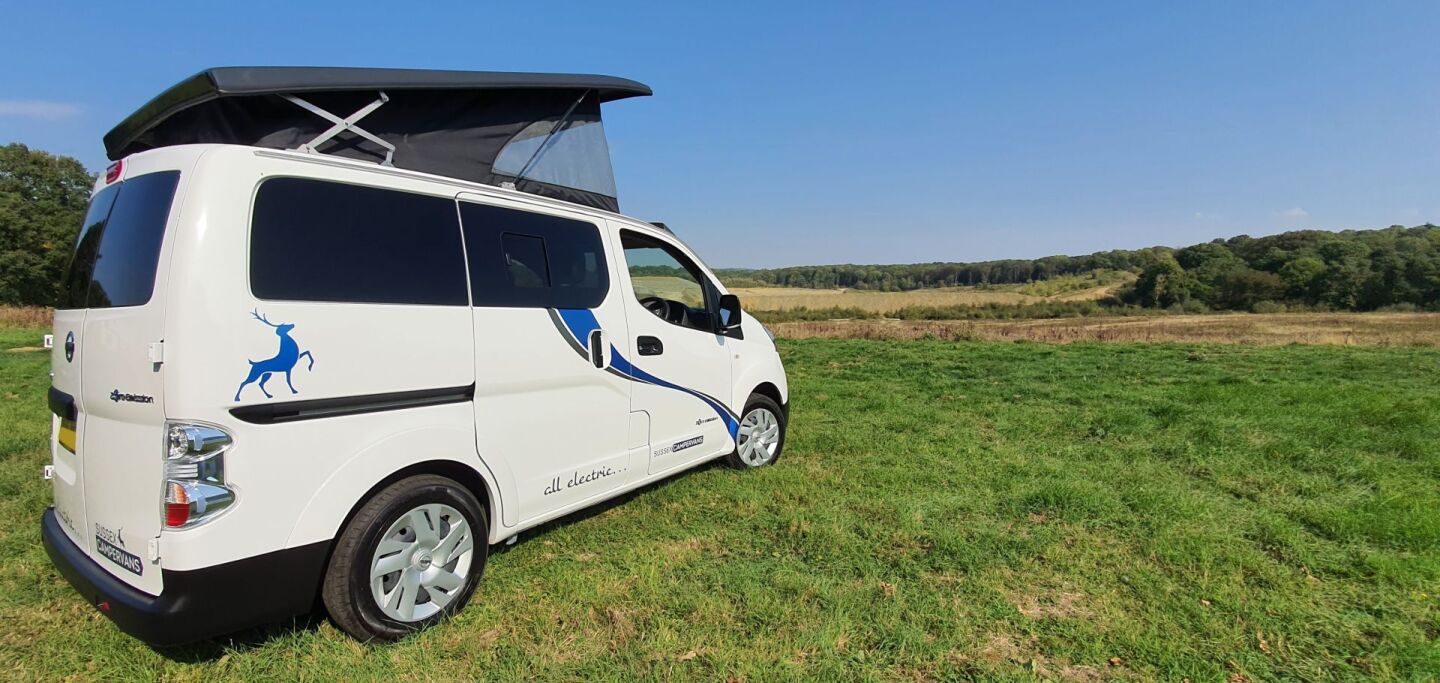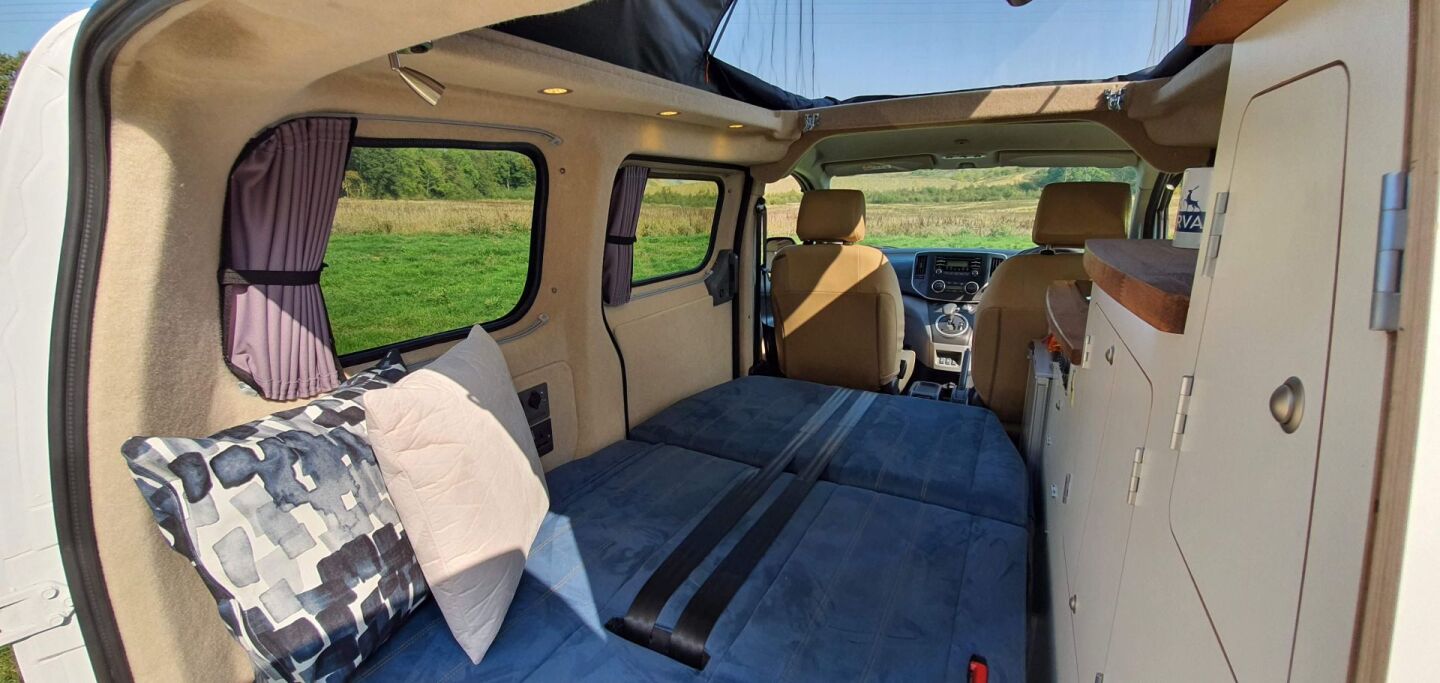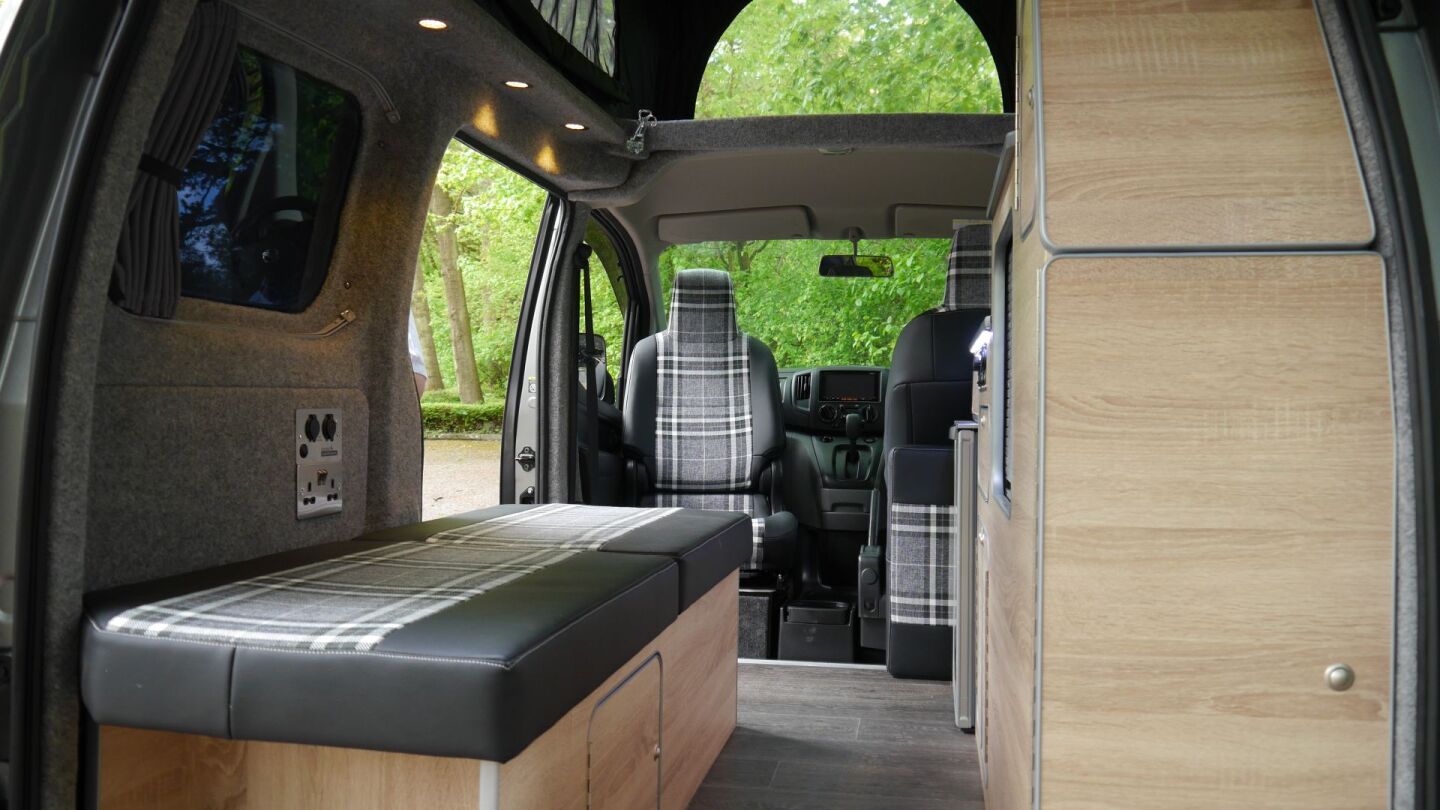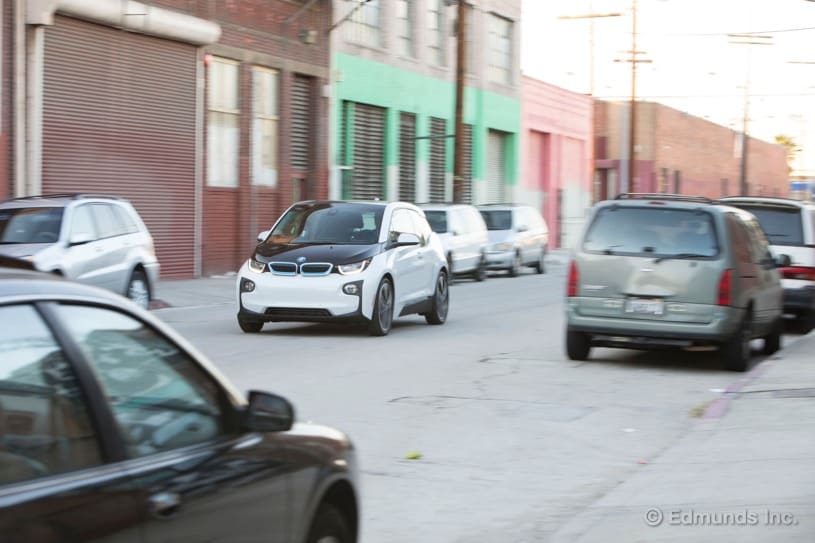Nissan electric mini-campervan doubles its lithium to leave gas behind
As the world waits for truly off-grid-capable next-gen electric campers like the Tesla Cybertruck pop-up pickup and double-popping eBussy van camper, conversion shops continue to reach for the Nissan e-NV200 as their electric camper base vehicle of choice. Great Britain’s Sussex Campervans is the latest, taking its e-NV200 Camper Car a step further by eliminating both gasoline and liquified petroleum gas (LPG) from the camper equation. The resulting mini-campervan becomes electric through and through, offering a tiny, efficient way of traveling and camping in the wild.
We’ve seen a few Nissan e-NV200 camper vans in the years since Nissan first launched its small electric van, and the upgrade to a 40-kWh battery pack has made them more practical. Efforts like the Spanish Bram Pacific, British Hillsdale Leisure Dalbury E and German Reimo N-Vane have relied on traditional LPG for fueling the stove, heating and/or other onboard amenities.
Sussex, on the other hand, doesn’t want the word “gas” (or its initial) to appear anywhere near its newest camper. So it brings together two rising camper trends: the electric-powered base vehicle and the gas-free all-electric living module, often built into gas-engined camper vans or non-motorized trailers. The 180-in (456-cm) e-NV200 Camper Car becomes more than just a conversion package thrown into an electric van, rolling out as an all-electric, fossil-fuel-free mini-camper.

Sussex Campervans
The first part was easy – Sussex specializes in Nissan/Renault camper vans, so creating an electric-motored camper was just a matter of putting its NV200 floor plan into the e-NV. The next step involved adapting the equipment package around battery power. The e-NV’s 40-kWh battery pack provides a modest 124-mile (200-km, WLTP) combined range, which is unlikely to leave a whole lot of battery power for running camping equipment. Instead of wiring amenities into the main battery, the way more ambitious electric camper projects attempt, Sussex adds a dedicated lithium leisure battery with inverter/charger.
Sussex’s electrical system is designed to accept optional solar charging, which could prove quite valuable. Unlike in an ICE-powered vehicle, in which the engine charges the leisure battery during driving, the e-NV200 Camper Car’s leisure battery has to be charged independently, from the grid. Sussex wires the secondary battery charging point to the front of the vehicle next to Nissan’s charger for convenience, but hookup is independent and requires a standard 230-V outlet. Solar charging would add an option for keeping appliances running should shore power be hard to come by.

Sussex Campervans
Sussex explains that it looked into the possibility of wiring the batteries together so the vehicle battery could run camper equipment when necessary, but it says doing so would void Nissan’s warranties. By separating the batteries, Sussex also avoids the possibility of running down the drive battery while camping, only to end up stranded.
Running out of cooking, lighting and fridge power is one potential pitfall of going fully electric versus using tried-and-true LPG or diesel, but chances are that those journeying out in a 125-mile electric camper won’t be straying too far off the grid and will instead be staying at campsites with power hookups. So Sussex’s e-camper van should still appeal to the right type of buyer.

Sussex Campervans
The e-NV Camper Car has a simple but versatile floor plan that starts with a long console stretching from just behind the front passenger seat to the cargo area. The front section is a kitchen with a single-burner induction cooktop and sink. Since this camper van has a sliding rear door on both sides, the sink sprayer pulls up and out the door to double as an outdoor sprayer for cleaning down dirty gear, clothes, dogs, etc.
Moving back, the console steps up into a worktop and then into a full-height cabinet that houses the electrical hardware. Additional cabinet storage is located throughout the console, and the 50-L compressor fridge and electrical control center are both located under the kitchen counter. A series of 12-V, 230-V and USB outlets are located throughout the van.

Sussex Campervans
The two-seat “rock-n-roll” rear bench quickly folds into a compact bed for two, while the standard pop-up roof is built to accommodate an optional second bed. Sussex also offers a solo camper configuration with a fold-forward driver-side bench/bed that leaves a center aisle open for more leg and elbow room. A swivel driver seat and small removable tabletop secured to the kitchen block complete the interior.
The e-NV200 Camper Car starts at £59,995 (approx. US$78,225). For those that fancy a Nissan mini-campervan but aren’t ready to jump into electric camping with both feet, Sussex offers the gas-powered NV-200 Camper Car starting at £39,995 (US$52,150).
The six-minute walkthrough below provides a closer look at the e-NV200 Camper Car.
All Electric Camper e-NV200 Nissan CamperCar Sussex Campervans UK South London Brighton Micro Small
Source: Sussex Campervans








